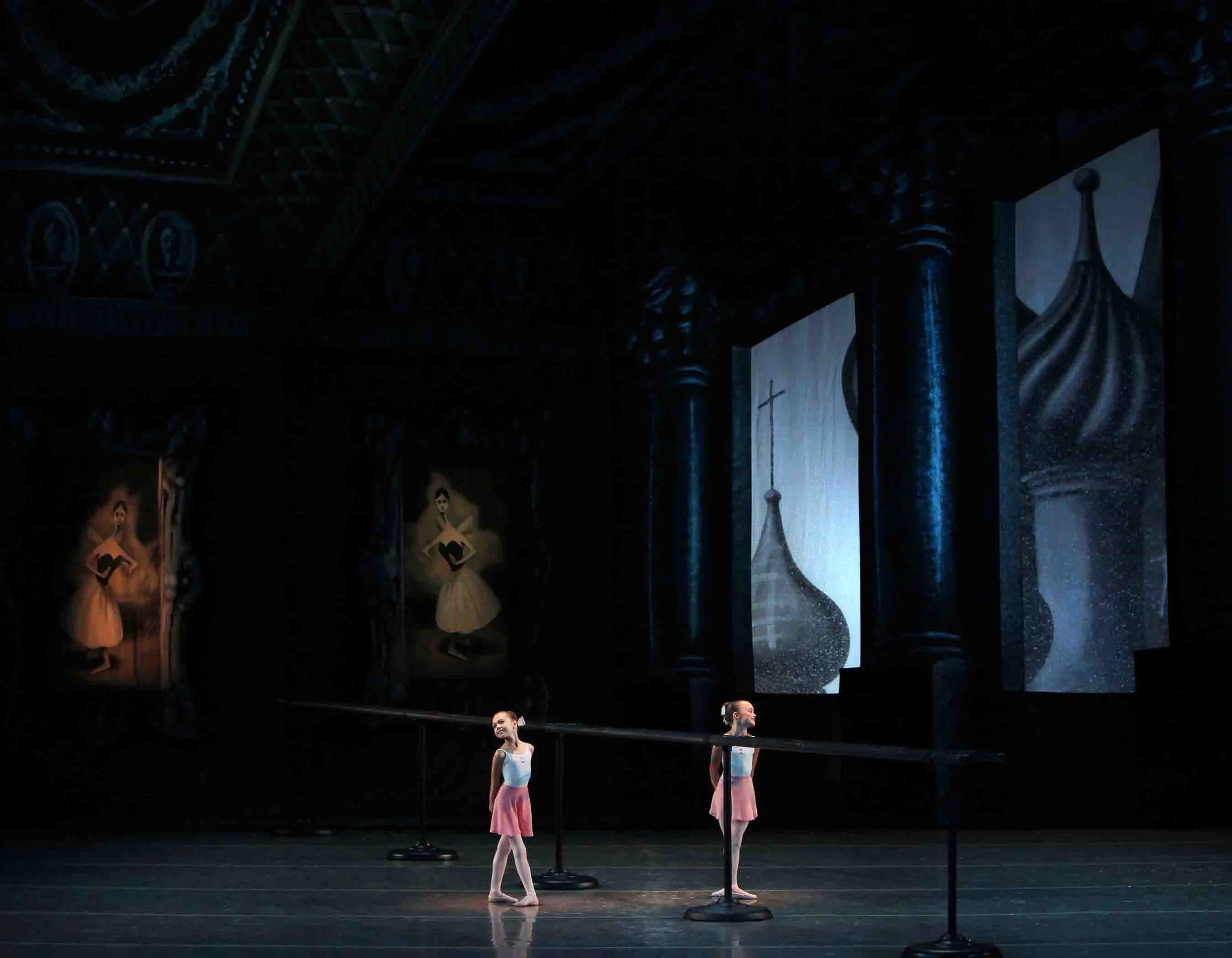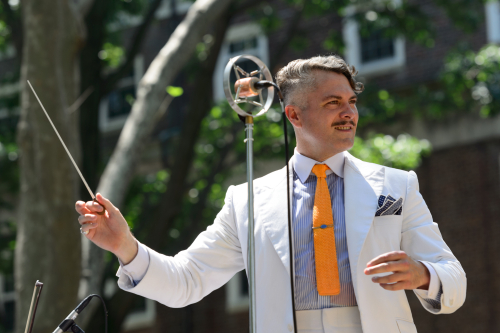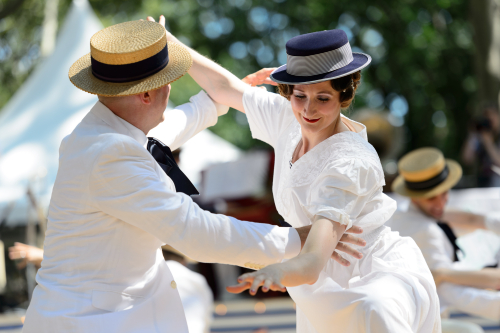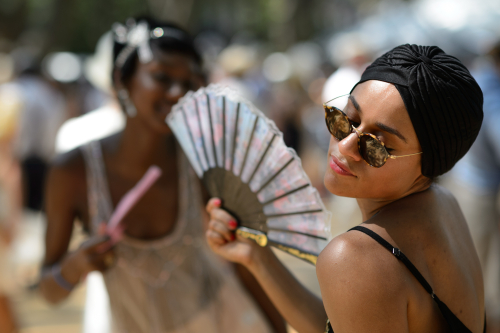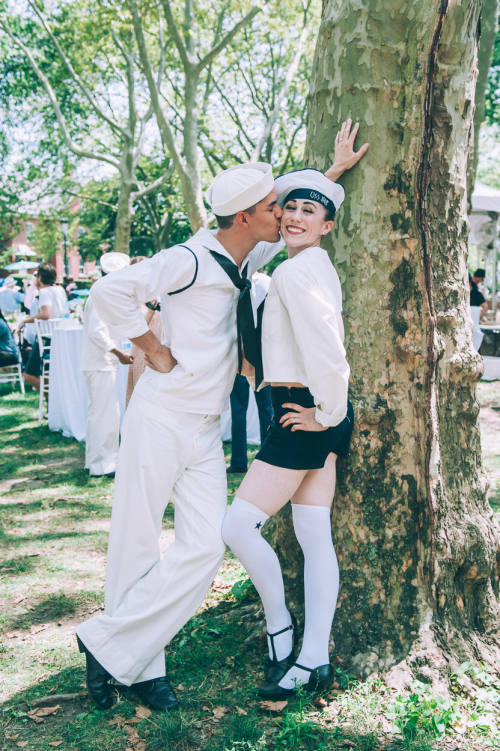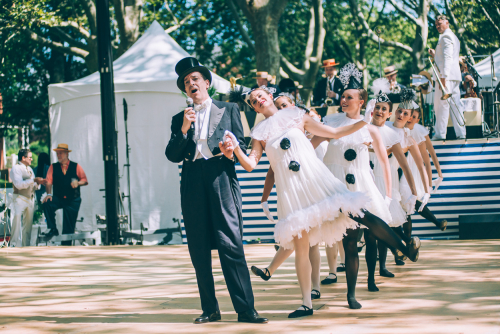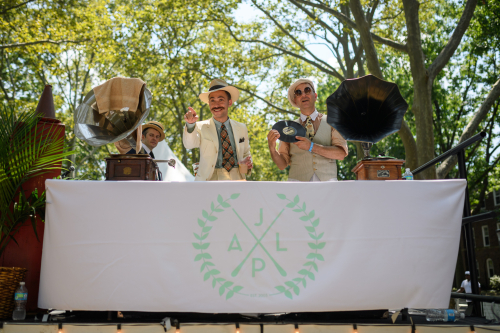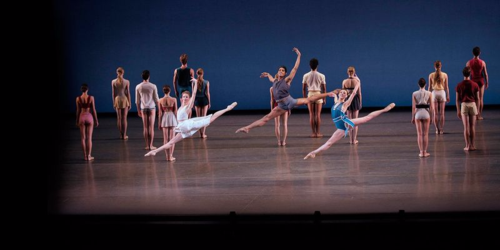“It’s got a great beat and you can dance to it.” You wouldn't necessarily think to apply the old chestnut from “American Bandstand” to the works of Igor Stravinsky. Yet in his swirling colors, counterposed in thrusting, angular relief, there is something obviously danceable to the modern master—and why his music has called out to such a wide range of dancers and choreographers over the last century.
Scènes de Ballet
“Stravinsky x Five,” a program from the winter season of the New York City Ballet, brings together five dances by five choreographers interpreting the music of this one composer. It begins with Scènes de Ballet, Christopher Wheeldon’s second work for the company that premiered in 1999. The work calls for sixty-two students, all drawn from The School of American Ballet, who dance in the imaginary reflection of the mirror at the barre of a ballet studio. The conceit is simple but brilliant and one that is ripe for exploration (and the first reason I came to see this program). But it rises or falls in its execution by the students, who must dance with synchronized precision. So here the work is also a demonstration of the next generation of NYCB, made more poignant as these young dancers do rise to the challenge of this ballet.
With a fanciful set by Ian Falconer, who envisions a soaring dance studio overlooking onion domes as though illustrated in a children’s storybook, the work recalls the Imperial Russian origins of both its composer and this company through its founder, George Balanchine. The dancers, starting with two of the youngest ballerinas and building to greater complexities of older students, perform not only as reflections in the imaginary mirror but also as reflections of the legacies of dance they carry forward.
Wheeldon’s choreography exhausts every permutation of the setup and goes too long, finishing in an Esther Williams finale. What should be saved for the conclusion now occurs halfway through. The reflection of a young dancer suddenly breaks from formation. A pas de deux of older dancers enters the “mirror” in a dream sequence imagined by the student on the other side. The unexpected break is the most meaningful moment of the dance, truly breathtaking, as the aspirations of countless hours at the barre are made real.
The Cage
Next up is The Cage, Jerome Robbins’s 1951 ballet based on Stravinsky’s 1946 Concerto in D for String Orchestra. Unlike the Stravinsky of Scènes de Ballet, an old-world phantasia he composed for a Broadway review in 1944, this high-modernist work is all fits and starts. Robbins visualized this music in “insect and animal life” with “the female of the species considering the male as prey. This ballet concerns the rites of such a species.” The result is a Rubies feel, with many pigeon-toed struts executed in formation. The inhumanity of the spectacle is heightened by Jennifer Tipton’s stark lighting, teased tufts of hair, a rope web by Jean Rosenthal, and costumes by Ruth Sobotka that render the dancers as sun-deprived and subterranean. The story concerns a “Queen” (Savannah Lowery), a “Novice” (Lauren Lovette), and two male “Intruders” (Jare Angle and Sean Suozzi). But even when well danced, especially by Lovette, the result now comes across as mid-century burlesque, with a femme who is cartoonish fatale.
Eight Easy Pieces
Eight Easy Pieces up next takes us from the 1950s to a work by Peter Martins that premiered in 1980. It also struck me as vintage PBS, a spare composition lighting up my Trinitron (which it just might have done). Through the dance Martins gives form to eight piano duets that Stravinsky wrote with easy left- or right-hand parts: three for the ballet impresario Sergei Diaghilev himself, and five for Stravinsky’s own young children. Here the piano and its shared players are brought right on stage. Martins’s minimalism can come across as fussy, but danced by Rachel Hutsell, Olivia MacKinnon, and Alex Maxwell, all new to their roles, the effect was a delight, with Stravinsky’s music distilled into pixels of color.
Scherzo Fantastique
I hope the next dancer-choreographer commission holds up as well, but I doubt it will. Justin Peck is ballet’s millennial machine, a soloist and resident choreographer whose lack of affect (at least as seen in the documentary Ballet 422) is in contrast to the ebullience of his work. For Scherzo Fantastique, which premiered just this summer in Saratoga (and is this twenty-nine-year-old’s eleventh work for NYCB), Peck takes a right at spring and lands his Stravinsky in the full light of summer. With a stunning Fauvist backdrop by Jules de Balincourt, the Bushwick-based French painter, this dance should have everything going for it in its return to modernist animism. But here Peck is all sun and no shade, more MGM than NYCB, with a sensibility that harkens to a golden age when ours calls out for iron.
Stravinsky Violin Concerto
Finally it was time for the two masters together: Stravinsky and Balanchine. George Balanchine came to co-found the School of American Ballet and New York City Ballet through one of those grand twentieth-century odysseys. Trained in what was then the Imperial Ballet School of Saint Petersburg, he fled the Bolsheviks for Paris where he became Ballet Master in the final years of Diaghilev’s Ballets Russes. Finally, after a turn in Hollywood, he came to New York, where he set about teaching American dancers classical technique infused with Modernist sensibility, with his School of American Ballet training all of his dancers for New York City Ballet. In a program that begins at the barre in old Russia with Scènes, “Stravinsky x Five” concludes with the full fruits of Balanchine’s cultivation of ballet in new America.
Stravinsky Violin Concerto, first choreographed by Balanchine for the Ballets Russes in 1941 and reimagined three decades later for NYCB, is presented here front loaded with principals of the company. “The capabilities of his dancers to dance as he wanted came from his classes,” writes Suki Schorer in the new book Balanchine Teaching. Through the discipline of daily exercises at the barre, the execution of the plié, the tilt of the head in épaulement, and the importance of the fifth position to a body’s vertical center, Balanchine fine tuned the instruments of his company.
Even in the current principals of NYCB, we continue to see his resonance: the fluid flexibility of Maria Kowroski, the floating leaps of Amar Ramasar, the swift strength of Robert Fairchild, and the stunning precision of Sterling Hyltin. ”Balanchine’s choreography, he made clear, came from the music,” Schorer continues—and was arguably never better than from the music of Stravinsky.
“Stravinsky x Five” continues with modified casting through this Friday, February 3, at the New York City Ballet.
